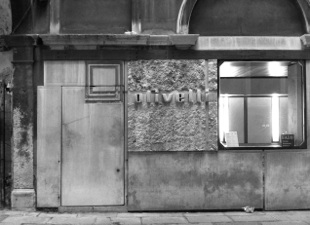DSGN3100: Architecture Studio
Poetics of Material Assembly
DSGN3100: Architecture Studio
Poetics of Material Assembly
Introduction:
"And you can make the same conversation with concrete. And you can make the same conversation with paper, or with papier-mache, or with plastic, or with marble, or any material that has its nature. And it’s the beauty of what you create that you honor - the material for what it really is. And never say that you use it in a kind of subsidiary way which makes the material itself wonder when the next man will come who will honor its character, you see."
Louis Kahn, “Lecture at Pratt Institute, 1973”
poetic |pōˈetik| adjective.
of, relating to, or used in poetry: the muse is a poetic convention.
• written in verse rather than prose: a poetic drama.
• having an imaginative or sensitively emotional style of expression: the orchestral playing was colorful and poetic.
Architecture aims to evoke emotional and intellectual response from the phenomenal qualities of physical constructs. It requires the masterful use of materials and meticulously crafted details beyond the basic human needs for shelter.


Olivetti Showroom / Scarpa Photo: Tsubaki ©
The pedagogical intention of this studio is to develop an innate understanding of relationships between the materiality and details through the physical exploration of specific materials and their expressive potential as assemblies.
The course employs two distinct modes of investigations, empirical and theoretical. The empirical focuses on making, exploring a specific material and assembly method through trial and error. The process is methodically documented and the artifact qualitatively analyzed through various representational means. The theoretical focuses on the speculative investigations of significant building precedents and their material assemblage explored through various representational means.
Both methodologies are discreet yet, explicitly treated as an exploration on how to mediate the in-between spatial condition as an architectural resolution. It is intended to instill new skills and foster the kernel of ideas along the way, seamlessly integrating into the semester long design project.
The studio entrusts the individual student to build and synthesize the previously introduced architectural issues to achieve the educational goal set forth in the course.
The studio relies on both, traditional forms of representation and fabrication methods as well as digital modeling and fabrication. Solid working knowledge of Rhino, Form-Z or an equivalent digital modeling tool along with AutoCad is required. Basic skills on Adobe Suite (Illustrator & Photoshop) will also be a prerequisite.
“Performance” is an empirical process of improvisation and adjustment through trial and error, a self-discovery process. “Student Performance” in the studio is also evaluated as such. Disciplined, self-directed recovery from a spectacular error is valued over mediocre success merely following the instructions.